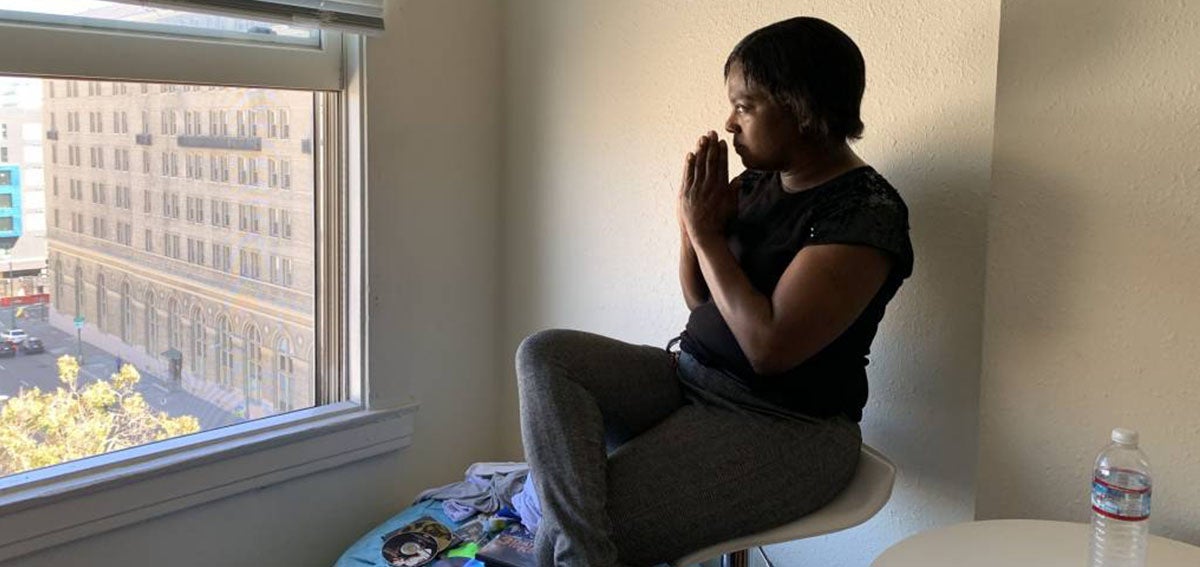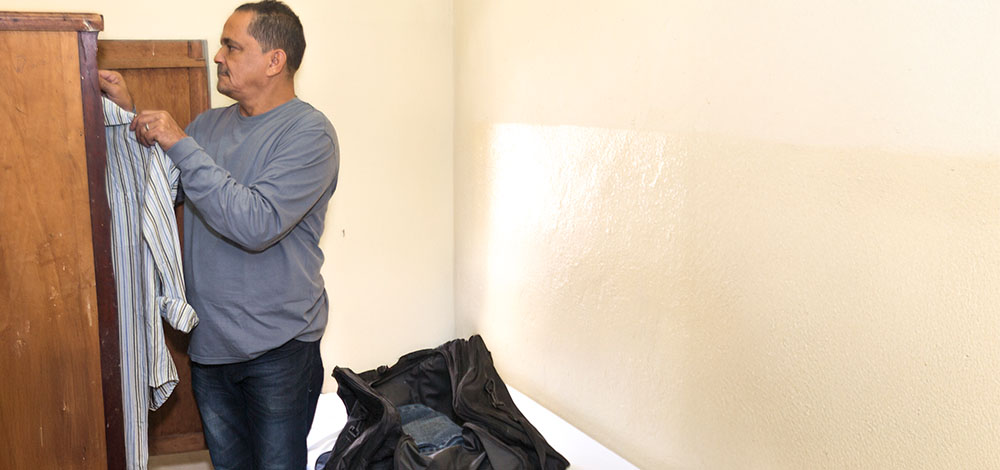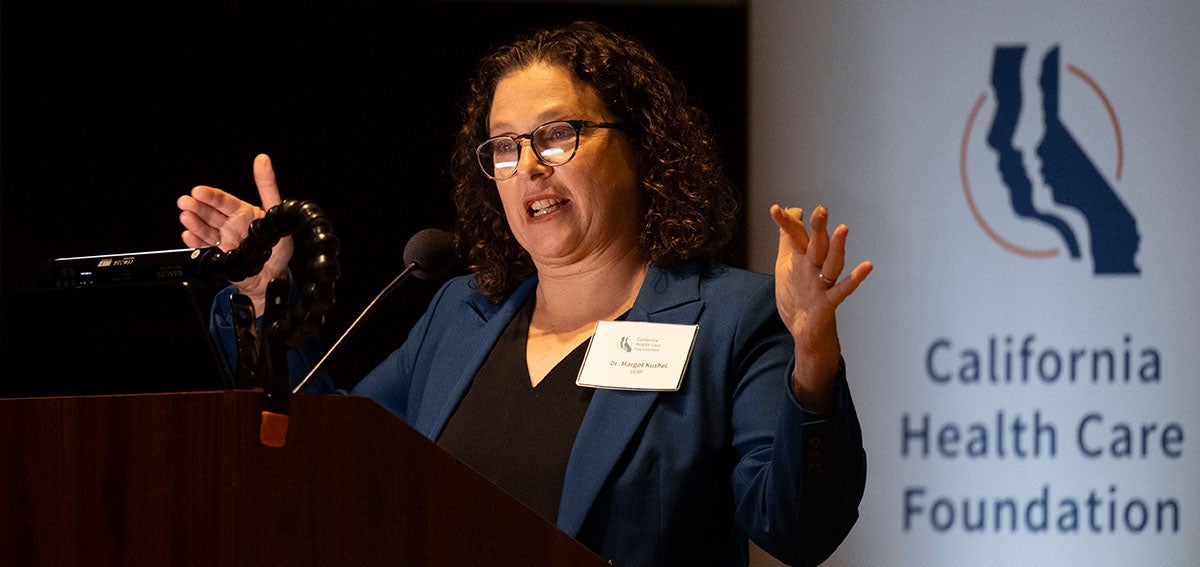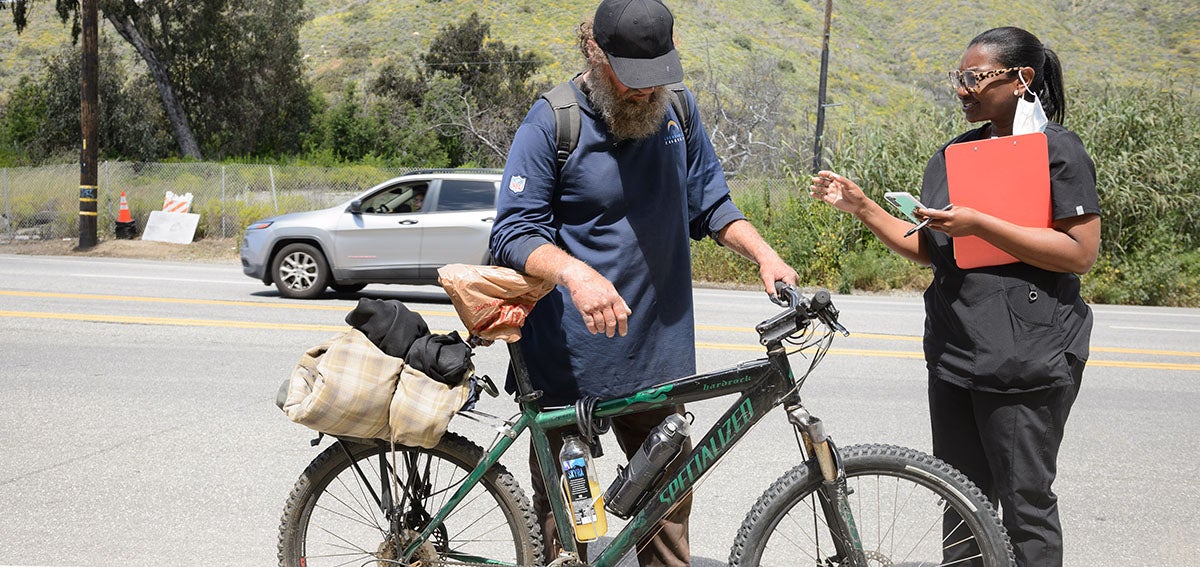

For the past 15 years, Bay Area resident Sonja Summerville Trotter has cycled in and out of homelessness. As with so many others, there wasn’t one single event or cause that led to her living on the streets. Her life has been complicated by post-traumatic stress disorder from painful experiences that included surviving a rape, and she has been in and out of addiction treatment and jail.
In March, Summerville Trotter left a treatment program with nowhere to stay again just as the COVID-19 pandemic was accelerating. Then an employee from the treatment program called to offer her a hotel room as part of Project Roomkey, California’s effort to quickly house people at highest risk of COVID-19 complications who are also experiencing homelessness.
Summerville Trotter finally had housing — at least temporarily. After a month at a Radisson Hotel, things got even better. Alameda County officials offered Summerville Trotter her own studio apartment, with a seventh floor view, in the heart of downtown Oakland.
“I hate when people say you can’t make it,” she told Erin Baldassari and Molly Solomon on the KQED podcast Sold Out: Rethinking Housing in America. “It feels good to have a roof over your head, take a hot shower every day, and have something in your stomach.”
These days, Summerville Trotter is managing her stress and asthma with prescription medications, seeing her therapist, and has returned to eating well. Project Homekey, the second phase of California’s effort to house people experiencing homelessness, aims to create more permanent housing for others like Trotter.
Homelessness experts like Margot Kushel, a professor of medicine at UCSF, say prioritizing permanent housing for people with complex medical and behavioral health needs — a model known as Housing First — is exactly what the state needs to end homelessness. “I’m a physician and I actually now spend most of my time working on housing,” she told Baldassari and Solomon. “And the reason I do it is I like to say that there is no medicine as powerful as housing.”
No Strings Attached
In 2016, California committed to a Housing First model with SB 1380, signed into law by former governor Jerry Brown. The law requires all state programs that provide housing to people who are experiencing homelessness or at risk of doing so to adopt guidelines and regulations that include Housing First policies.
Housing First differs from other approaches because it does not require people experiencing homelessness to address behavioral health problems and other challenges before providing them with housing. “The Housing First approach views housing as the foundation for life improvement and enables access to permanent housing without prerequisites or conditions beyond those of a typical renter,” according to the National Alliance to End Homelessness.
Housing First policies also allow for robust treatment for mental health and substance use problems, if needed. Research shows this approach is more effective than models in which people must prove themselves worthy of permanent housing on condition of enrolling in rehabilitation programs, obtaining mental health treatment, or holding down a job.
Until the 1990s, conditional models were thought to be the best way to address homelessness. But frontline workers and clinicians realized that the approach could be counterproductive, Carlyn Zwarenstein wrote in Filter. “When someone is homeless . . . what they need first isn’t detox or psychiatry. How . . . can anyone be expected to address such issues when they don’t have a roof over their head, a permanent bed, or a door they can lock?”
Some programs still advocate for conditional models because they offer a convenient explanation for homelessness — reinforcing stigmas surrounding mental health and substance use disorders and placing the blame for homelessness on individual failings rather than structural problems in society, Kushel said on Twitter.
Stable Housing, Stable Health
A recent permanent supportive housing initiative in Santa Clara County shows the powerful potential of the Housing First model. From 2015 to 2019, a team of researchers led by Kushel tracked 423 chronically homeless people who either received housing and support services through the county program or received usual care. All were frequent users of county health and social services.
The study found that 86% of people in the intervention group were able to remain housed for 93% of the study follow-up period, Jared Brey reported in Next City. They also had fewer emergency psychiatric visits, decreased shelter use, and more regular mental health visits than the control group.
“Even for the very sickest of the sick, they were really able to get into housing and stay housed” through the county initiative, Maria Raven, an associate professor of emergency medicine at UCSF and a study coauthor, told Brey.
A randomized control trial run by the US Department of Housing and Urban Development demonstrated that families receiving permanent housing subsidies with no supportive services saw greater success in attaining stable housing and improved health than families placed in emergency shelters, transitional housing, or rapid rehousing.
Building on a Program’s Success
Project Homekey is a prime example of California’s Housing First policy. The initiative allocates $550 million in federal Coronavirus Aid, Relief, and Economic Security (CARES) Act funds and $50 million provided by California’s general fund to “flip underutilized hotels and motels across the state into interim and permanent housing,” Manuela Tobias reported in CalMatters. California’s Joint Legislative Budget Committee recently approved an additional $200 million in CARES Act funds to be allocated to Homekey, raising the total to $800 million. Blue Shield of California and Kaiser Permanente have committed another $45 million to fund the initiative’s operating costs.
Counties, cities, and other government entities can apply for grants, which are awarded on a rolling basis. The initiative reserves funding for certain regions in an effort to address the inequitable impact of homelessness on Black and Latinx communities. The California Department of Housing and Community Development, which is administering the grant funding, “has divided the state into eight regions, with each region having funding reserved on a time-limited basis during the ‘priority application’ period.”
The first round of Homekey awards went to seven California communities, including the city of El Centro in Imperial County, Contra Costa County, and Mendocino County. Since then, the governor has announced six more rounds of awards totaling $836 million. The average per-unit cost to Homekey is $138,512, which is well below the average cost of building new housing units in the state.
Communities that have already received funding are moving quickly to purchase buildings and convert them into permanent supportive housing. The City of El Centro is using its $3 million grant to construct 13 tiny duplexes on city property. The units will house homeless youth and students who are exiting the foster care system.
Oakland is using $10 million in funding to purchase a former California College of the Arts dorm building to house seniors at high risk of suffering severe consequences from COVID-19.
In Riverside County, the nonprofit organization Project Legacy will manage some of the county’s $10.5 million award to create a 52-bed transitional housing facility for LGBTQ youth and people living with HIV/AIDS.
Homekey builds on the success of Project Roomkey and is a “once-in-a-generation opportunity to massively expand housing for the homeless in California with federal stimulus funds,” Governor Gavin Newsom said in a statement. CARES Act funds must be expended by December 30, 2020, and state general funds must be expended by June 30, 2022.
The next edition of Essential Coverage will be on November 16. Learn more about CHCF’s work on homelessness and health care. As always, you can email me.
Authors & Contributors





